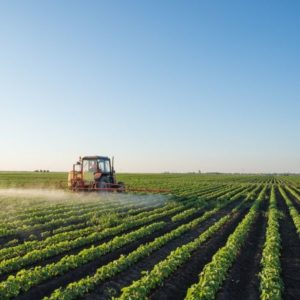When it comes to picking a fertilizer mix for gardening or landscaping, you want to be sure your plants are getting the nourishment they require. When it comes to labelling fertilizers, there are a few standards that all fertilizer manufacturers must adhere to, and understanding these guidelines may make comparing fertilizers much easier.
What are NPK Fertilizers
NPK stands for “nitrogen, phosphorus, and potassium”— the three nutrients that make up NPK fertilizers, and it’s one of the first things you’ll notice on fertilizer packets. While the fertilizer’s description may not specifically state “NPK,” you will find a string of three numbers separated by dashes. These figures represent the nitrogen, phosphorus, and potassium content of that fertilizer, respectively.
description may not specifically state “NPK,” you will find a string of three numbers separated by dashes. These figures represent the nitrogen, phosphorus, and potassium content of that fertilizer, respectively.
For instance, if you buy a 10-pound bag of fertilizer branded 10-20-10, it implies carrying 10% nitrogen, 20% phosphorus, and 10% potassium by weight. Other additional nutrients or fillers account for the remaining 60% of the bag’s weight.
Every fertilizer on the market will likely have a label containing information on the NPK measurements of the product. It’s important to note that not all NPK fertilizers are created equally, as any synthetic fertilizer will not be OMRI Approved for use on an organic farm.
For our farmers, the products they use on their organic farms must be OMRI approved, which our chicken manure pellets are.
While some fertilizers are advertised with very high NPK contents, it doesn’t mean they’re the end all be all for improving your overall soil health. Synthetic fertilizers will always have a higher NPK measurement than a fertilizer derived from animal waste because they’re designed to release this immediately. In many cases, such as on your lawn, you may not want to release this fertilizer at once. In instances such as this, we recommend chicken manure on the lawn. It works well in gardens, on large scale organic farms, or on really any plant that you want to grow in a more natural fashion!
Significance of NPK Fertilizer
Not all plants/crops have the same nutritional needs, and applying chemicals carelessly can sometimes cause more harm than any good. For instance, when you use a nitrogen-rich fertilizer, certain plants will concentrate all of their energy on creating foliage rather than blooms.
If you don’t know how well your soil is satisfying a plant’s nutritional requirements but still need to feed it at a certain time, use one of the following methods.
- Get your soil examined by the experts.
- Instead of putting chemical laden fertilizers, use compost.
- Apply a slow-release fertilizer to your plants— it is less likely to cause any harm.
Analysis Numbers
Fertilizers with high analysis numbers can be used in lesser quantities than the ones carrying lower value concentrations. In other words, five pounds of 10-20-10 fertilizer equals ten pounds of 5-10-5 fertilizer in terms of nutrient value.
Benefits of NPK Fertilizers
To comprehend the benefits of NPK fertilizer as a whole, we first need to understand the advantages of its each component, i.e., Nitrogen, phosphorus, and potassium. So, let’s get started:
Nitrogen
Since Nitrogen is required for the growth of leaves, stems, and plants, high nitrogen fertilizers are ideal for lawns and leafy vegetables.
Nitrogen-deficient plants exhibit slowed growth, weakened stems, and yellowing or discolored leaves from the tip inwards.
Phosphorus
Phosphorus is required for seed germination and the development of healthy root systems in young plants. Swede, carrots, and turnips, for example, require a high phosphorus fertilizer.
Plants lacking in phosphorus may have a purple tint, as well as wilted, prematurely falling leaves.
Potassium
Potassium is necessary for flower and fruit growth as well as disease resistance in plants. For fruit-bearing and flowering plants, look for a fertilizer with high potassium and low nitrogen content. This will boost fruit and blossom production while limiting leaf growth.
If a plant’s potassium levels are low, it will produce fewer flowers and produce lower-quality fruits and vegetables. Curled or crinkled leaf edges with a dry look are also signs of potash deficiency.
Final Word
Before choosing an NPK fertilizer, be sure that you know what kind of flora you have and what are its feeding requirements. Once you have figured things out, simply check for the appropriate NPK plant fertilizer that meets your needs — the numbers will be plainly marked on the package. Since the application of different types of fertilizers differs, always read the package before getting started.
For more information regarding NPK fertilizers and to speak with our soil experts at Crop Fertility Services, click here.












